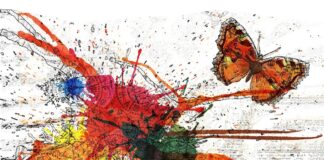Latent Space, a concept rooted in the fields of mathematics, statistics, and machine learning, holds a central position in various advanced applications, including artificial intelligence and generative modeling. The notion of Latent Space represents a multidimensional space where variables are hidden or unobservable. It has become a foundational concept in the development of innovative techniques and models, providing a framework to represent complex relationships and structures in data. By delving into the intricacies of Latent Space, we can unravel its significance, applications, and the transformative impact it has had on the landscape of data analysis and machine learning.
Latent Space, as a concept, revolves around the idea of capturing hidden patterns or features within data. In the realm of machine learning, particularly in unsupervised learning settings, Latent Space serves as a representation of the underlying structure in the input data. It encapsulates the essential variables that influence the observed data, allowing for a more compact and meaningful representation. This concept finds extensive use in dimensionality reduction techniques, where the goal is to reduce the complexity of data while preserving its essential characteristics. Principal Component Analysis (PCA) and autoencoders are examples of methods that leverage Latent Space for dimensionality reduction, enabling efficient data representation and analysis.
The first instance where Latent Space proves its significance is in the context of generative modeling, a field within machine learning that focuses on creating models capable of generating new, realistic data samples. One of the groundbreaking applications of Latent Space is in generative models like Variational Autoencoders (VAEs) and Generative Adversarial Networks (GANs). In these models, Latent Space serves as a compressed and structured representation of the input data. VAEs, for instance, map input data into a Latent Space where each point represents a potential variation of the input. This capability enables the generation of new data samples by sampling points from the Latent Space and decoding them back into the data space. GANs, on the other hand, leverage Latent Space to capture the distribution of real data, allowing for the synthesis of realistic samples that mimic the characteristics of the training data.
Latent Space’s adaptability to various data types and structures is a testament to its versatility. Whether applied to images, text, or other forms of data, Latent Space provides a unified framework for capturing the underlying patterns and structures. In image generation tasks, for example, Latent Space can encode features such as styles, colors, and shapes, allowing for the creation of diverse and realistic images. Similarly, in natural language processing, Latent Space representations can capture semantic relationships between words or phrases, enabling the generation of coherent and contextually relevant textual content. This adaptability positions Latent Space as a fundamental concept in the development of generative models with broad applicability across diverse domains.
The second instance where Latent Space shines is in its role in representation learning. Representation learning involves training models to automatically learn meaningful representations of data. Latent Space plays a crucial role in this process by providing a space where the inherent structure of the data can be captured. In tasks like feature learning or transfer learning, Latent Space representations enable models to generalize across different datasets or tasks. For instance, in transfer learning, a model pretrained on one task can leverage the knowledge captured in its Latent Space to perform effectively on a related task with a different dataset. This ability to extract and transfer knowledge from one domain to another is a testament to the power of Latent Space in representation learning.
Latent Space, within the realm of unsupervised learning, also contributes to clustering and anomaly detection. By capturing the essential features of the data in a lower-dimensional space, Latent Space representations enable clustering algorithms to group similar data points together. This is particularly evident in applications such as customer segmentation in marketing or identifying patterns in complex datasets. Anomalies or outliers in the data, which may not conform to the learned structure in Latent Space, can be easily detected, providing valuable insights into unusual occurrences or potential issues within a system.
The interpretability of Latent Space representations is a critical aspect, especially when dealing with complex models and high-dimensional data. Visualization techniques allow researchers and practitioners to explore the learned Latent Space and gain insights into the patterns encoded by the model. In image generation tasks, for example, traversing through the Latent Space can reveal how specific features or attributes change in the generated images. This interpretability fosters a deeper understanding of the model’s internal representations and facilitates the identification of meaningful factors influencing the data. It also aids in the debugging and refinement of generative models to ensure the generation of coherent and meaningful samples.
The third instance where Latent Space reveals its significance is in the domain of variational inference. Variational inference is a framework used in probabilistic modeling to approximate complex posterior distributions. Latent Space, in this context, acts as the space of latent variables that influence the observed data. Variational Autoencoders (VAEs) leverage Latent Space for efficient and flexible variational inference. The encoder network in a VAE maps input data to a distribution in Latent Space, and the decoder network reconstructs the input data from samples drawn from this distribution. This variational approach allows VAEs to model complex probability distributions and enables tasks such as generating novel samples or imputing missing data.
Latent Space also plays a crucial role in semi-supervised learning, a paradigm where models are trained on datasets containing both labeled and unlabeled examples. In semi-supervised tasks, Latent Space representations allow the model to leverage the information from both labeled and unlabeled data efficiently. This can lead to improved performance, especially in scenarios where acquiring labeled data is resource-intensive or impractical. Latent Space representations provide a means for the model to capture the underlying structure of the data and generalize effectively to unseen examples, even with limited labeled samples.
In summary, Latent Space stands as a foundational concept in the fields of machine learning, generative modeling, and probabilistic inference. Its ability to capture hidden patterns, facilitate representation learning, and support various applications in data analysis showcases its versatility and significance. Whether employed in generative models, representation learning, or probabilistic inference frameworks, Latent Space serves as a unifying concept that enhances the capabilities of machine learning systems. As the field continues to advance, the exploration and refinement of Latent Space representations are likely to remain a focal point in the pursuit of more effective, interpretable, and adaptive machine learning models.














